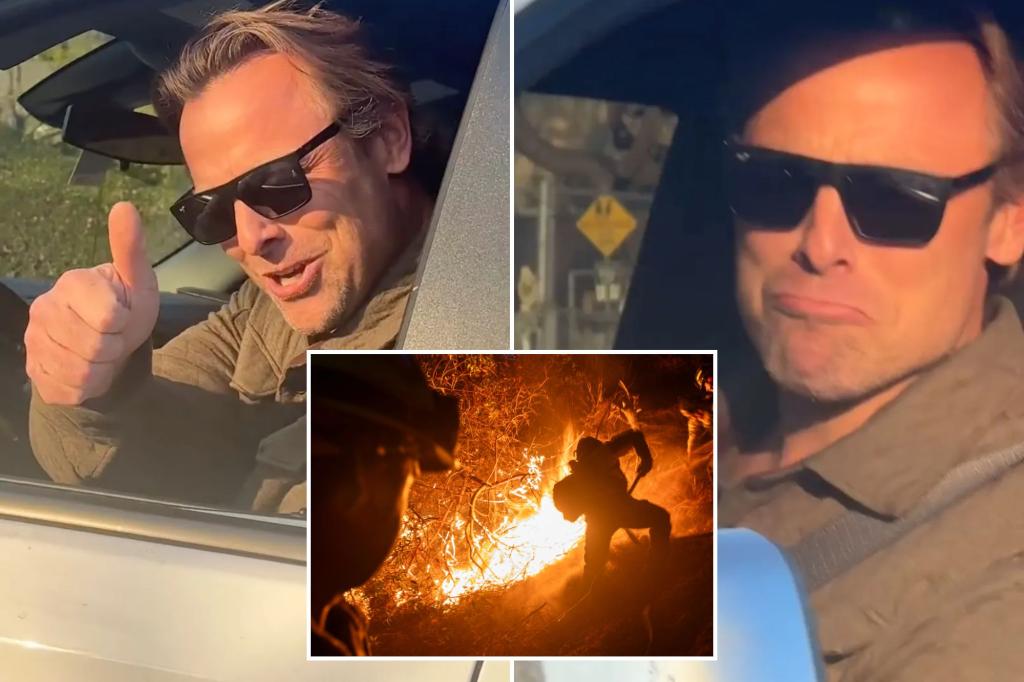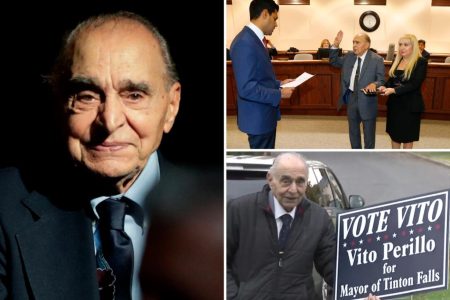This incident captures a microcosm of human behavior under duress, highlighting both the resilience and the selfishness that can emerge during a crisis. Against the backdrop of the devastating Palisades Fire in Los Angeles County, where thousands were evacuated and lives were lost, a tense confrontation unfolded in a long line of cars waiting to return home. Nick Clark, an independent creative director, documented the encounter on his Instagram account, capturing the alleged transgression of a pickup truck driver accused of cutting in line ahead of an elderly woman. The video sparked outrage online, epitomizing the frustrations and anxieties experienced by those displaced by the natural disaster.
The video depicts Clark approaching the driver of a silver Chevy Silverado, calling him out for allegedly cutting off the elderly woman after a four-hour wait. The driver, seemingly unrepentant, offered a smirk and dismissive responses to Clark’s accusations. He claimed he had been at a stoplight, implying a legitimate reason for his position in line, a justification Clark quickly challenged. The exchange escalated, with Clark questioning the driver’s sense of entitlement and labeling him “rich” and an “asshole.” The driver’s nonchalant attitude and apparent lack of remorse further fueled Clark’s anger and the online outrage that followed. The video became a lightning rod for discussions about social responsibility, empathy, and the importance of community during times of crisis.
Clark’s Instagram caption provided further context, explaining that the elderly woman was briefly out of her car searching for her son when the driver allegedly attempted to take advantage of the situation. He emphasized the collective suffering endured by those waiting to return to their homes in the fire zone, contrasting it with the driver’s perceived selfishness. The post garnered significant attention, with many commenters expressing their disgust at the driver’s behavior and praising Clark for calling him out. The incident underscored the heightened tensions and emotional vulnerability present during emergencies, where even minor acts of perceived injustice can become magnified.
The larger context of the Palisades Fire amplifies the significance of this seemingly small altercation. With thousands evacuated, homes destroyed, and lives lost, the fire created a climate of fear, uncertainty, and heightened emotions. The long lines of cars waiting to return home represented not just a logistical challenge, but also a shared experience of displacement and anxiety. The alleged act of line-cutting became symbolic of a disregard for this shared suffering, a violation of the unspoken social contract that binds communities together during times of adversity. The driver’s alleged actions struck a nerve, tapping into the collective frustration and vulnerability felt by those affected by the fires.
The incident also highlighted the power of social media in documenting and disseminating information during crises. Clark’s video quickly went viral, prompting widespread condemnation of the driver’s alleged actions and sparking a conversation about community responsibility. While some questioned Clark’s approach, many praised his willingness to speak out against perceived injustice. The incident demonstrated how social media can serve as a platform for holding individuals accountable and fostering a sense of collective responsibility during emergencies. However, it also raises questions about online vigilantism and the potential for misrepresentation or escalation of conflicts.
Beyond the specific incident, the Palisades Fire and its aftermath served as a stark reminder of the devastating impact of natural disasters and the importance of community resilience. The fires claimed lives, destroyed homes, and displaced thousands, leaving a trail of destruction and heartbreak. Amidst this tragedy, stories of courage, compassion, and selflessness also emerged. Neighbors helped neighbors, volunteers offered support, and communities rallied together to provide aid and comfort to those in need. The incident with the pickup truck driver, while negative, served as a counterpoint to these acts of kindness, highlighting the spectrum of human behavior that can emerge during times of crisis. The overall narrative, however, emphasizes the resilience of the human spirit and the capacity for empathy and collective action in the face of adversity.










